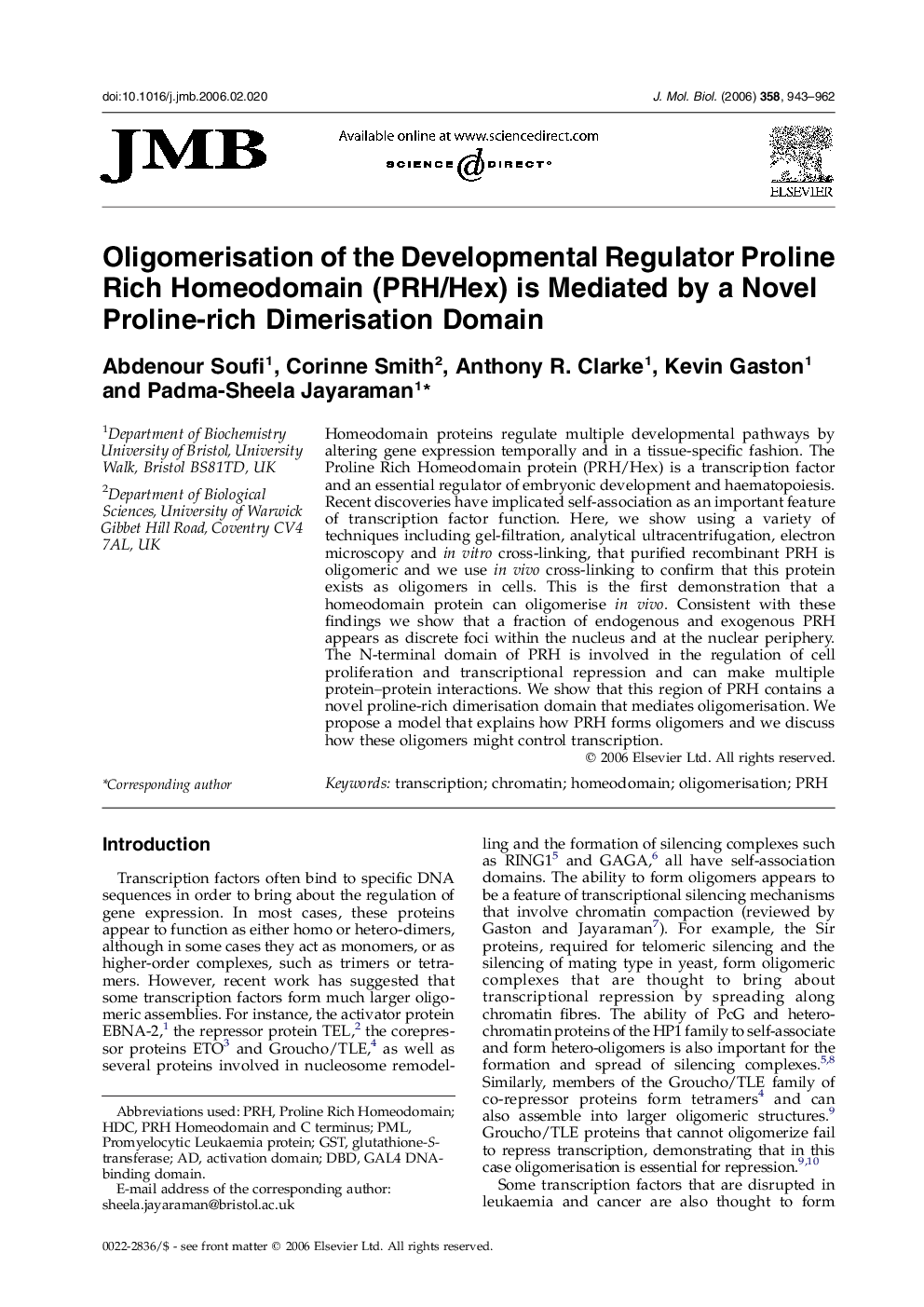| Article ID | Journal | Published Year | Pages | File Type |
|---|---|---|---|---|
| 2189738 | Journal of Molecular Biology | 2006 | 20 Pages |
Homeodomain proteins regulate multiple developmental pathways by altering gene expression temporally and in a tissue-specific fashion. The Proline Rich Homeodomain protein (PRH/Hex) is a transcription factor and an essential regulator of embryonic development and haematopoiesis. Recent discoveries have implicated self-association as an important feature of transcription factor function. Here, we show using a variety of techniques including gel-filtration, analytical ultracentrifugation, electron microscopy and in vitro cross-linking, that purified recombinant PRH is oligomeric and we use in vivo cross-linking to confirm that this protein exists as oligomers in cells. This is the first demonstration that a homeodomain protein can oligomerise in vivo. Consistent with these findings we show that a fraction of endogenous and exogenous PRH appears as discrete foci within the nucleus and at the nuclear periphery. The N-terminal domain of PRH is involved in the regulation of cell proliferation and transcriptional repression and can make multiple protein–protein interactions. We show that this region of PRH contains a novel proline-rich dimerisation domain that mediates oligomerisation. We propose a model that explains how PRH forms oligomers and we discuss how these oligomers might control transcription.
